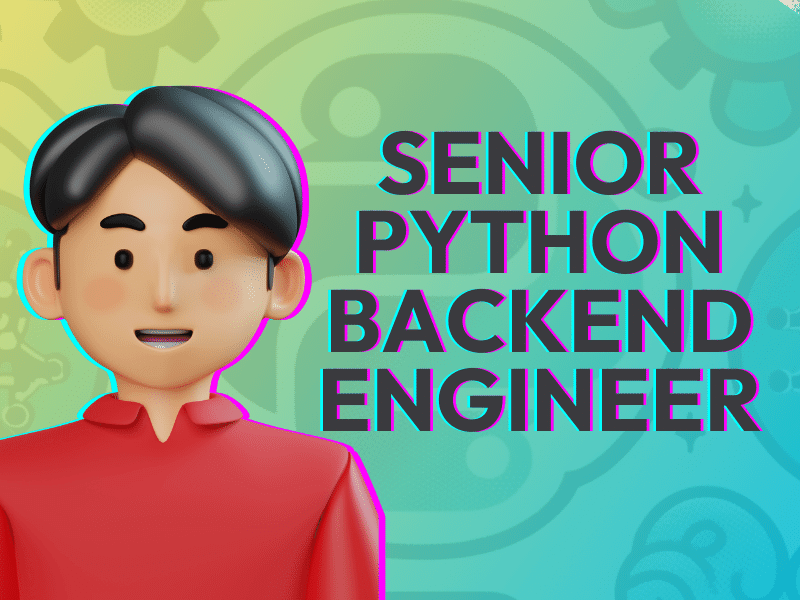Delivery Manager: Everything You Need to Know
Delivery Manager is a vague title.
In Tech, this can cover a wide range of responsibilities.
To clear things up, I spoke with technical recruitment consultant, Manthila Baduraliyage.
She gave me direct insights into what her clients are looking for in a Delivery Manager, what the role entails, and the best tips to land a job as a Delivery Manager.
There’s a lot to cover, so let’s get started.
What is a Delivery Manager?
As a Delivery Manager, you will be the bridge between directors and teams, like QA, Technical Support, and Development.
Your main job is to oversee a product from conception to launch, ensuring it arrives on schedule while coordinating with all teams and external stakeholders.
Contrary to some beliefs, you're not a Product Manager or a people manager.
You stand in a unique spot that requires fluency in data analysis, research, and, most importantly, interdepartmental communication.
Deliver Manager Responsibilities
The role can change based on the product you are working with.
For this article, we will use 2 examples, a Mobile Application Delivery Manager and a Data Engineering Delivery Manager.
Mobile Application Delivery Manager Responsibilities
Project Management from A to Z:
Manage End-to-End Software Development Projects: You're at the helm from initiation to closure, ensuring the seamless execution of processes, timelines, resources, and budgets.
Single Point of Contact: Serve as the go-to person for the application software development team, facilitating both communication and action.
Continuous Improvement: Consistently review and upgrade all aspects, from team driving to resource allocation, to elevate performance continually.
Communication & Collaboration:
Build Team Synergy: Foster open and effective communication within the development team as well as with cross-functional stakeholders.
Stakeholder Engagement: Develop and execute a communication plan to engage and inform stakeholders about project status.
Technical Understanding & Implementation:
Grasp the Intricacies: Understand the requirements, architecture, and tech solutions to guide estimation and implementation phases.
Resource and Cost Estimation: Collaborate with scrum masters and technical leads to forecast the resources, time, and cost required for software development.
Planning & Documentation:
Business Case Definition: Craft or support documents outlining business background, benefits, scope, schedule, budget, and security requirements. Secure approval through the IT governance process.
Work Breakdown Structure (WBS): Create a WBS to allocate resources effectively and clarify the release schedule with stakeholder agreement.
Governance & Quality:
Quality Gate Reviews: Prepare and present IT governance process materials to meet quality standards and obtain necessary approvals before application release.
Review and Track: Regularly compare estimated vs. actual resource allocation through capacity burndown tracking.
Team Coordination:
Cross-Functional Collaboration: Work in tandem with a wide array of team members—technical leads, architects, developers, testers, project managers, product managers, and UI/UX designers.
Multi-Project Management: Effectively manage daily activities across multiple projects to ensure deadlines and quality standards are met.
Skills & Expertise:
Tech-Savvy and Open-Minded: Always be prepared to explore and learn new technical and non-technical skills that align with product delivery.
Feasibility Assessment: Clearly and professionally communicate the viability of requested deliverables and timelines to stakeholders.
System Proficiency: Maintain expertise in the application and use of departmental systems, tools, and processes.
Business Process Understanding: Keep abreast of the business processes that impact the applications within your scope.
Now let’s take a look at the Data Engineering responsibilities, there will be some overlap, but also specifics for the role.
Data Engineering Delivery Manager Responsibilities
Core Project Oversight:
Lead Data Warehouse and BI Solution Projects: Your primary responsibility is to manage and steer these projects from initiation to closure, overseeing all intermediate management and execution tasks.
Communication & Collaboration:
Single Point of Contact: In IT, you will be the face of the data team. Your job is to sync up with stakeholders in both the business and IT sectors to discover and clarify DWH/BI Solution requirements.
Communication Strategy: Outline and execute a targeted communication plan to keep stakeholders informed and engaged throughout the project lifecycle.
Estimation & Planning:
Resource, Time, and Cost Estimation: Collaborate with Scrum Masters and Development Leads to gauge the required resources, timeframe, and budget for solution development.
Work Breakdown Structure (WBS): Create a thorough WBS to allocate resources efficiently and transparently, clarifying the release schedule for stakeholder approval.
Business Case & Governance:
Business Case Creation: Craft a compelling business case definition document that lays out the business background, weighs business benefits against costs, and secures approval through the IT governance process.
Day-to-Day Tasks
Morning:
Single Point of Contact: Start your day by checking in with the Director, Scrum Master, tech analysts, engineers, and offshore teams. You’re their go-to person for all matters concerning the project.
Mid-Morning:
Communication & Collaboration: Your calendar is likely filled with meetings. Mid-morning is the best time to sync up with internal teams to ensure everyone is aligned and obstacles are addressed promptly.
Before Lunch:
External Stakeholder Meetings: Attend meetings with external stakeholders to gather feedback, updates, and make necessary adjustments to the project plan.
After Lunch:
Resource Estimation: Assess and estimate the time and resources needed for software development. This often involves close collaboration with tech leads and Scrum Masters.
Communication Plans: Draft or update communication plans to keep stakeholders informed about project progress.
Late Afternoon:
Team Task Management: Review the tasks of each team member to ensure the product is on track for a timely launch. Make adjustments as needed for any unexpected challenges.
End of Day:
Prioritization: Revisit your task list and priorities for the next day. Ensure that urgent issues are slated for immediate attention and that long-term objectives are also making progress.
Requirements
As with the responsibilities, the requirements you need to meet to become a Delivery Manager will change based on the type of role you are applying for.
Let’s go back to our two examples of Mobile Application and Data Engineering.
Mobile Application Delivery Manager
Experience: You need at least 5+ years of experience as a technology manager or delivery manager, focusing on business application software.
Team Management: Experience leading both onsite and offshore teams across various time zones is crucial.
Mobile App Development: Demonstrable experience in publishing mobile apps on Google Play and Apple Stores is a must.
Technical Skills: You should be well-versed in mobile development tools like xCode, Swift, Android Studio, and related SDKs.
Methodologies: A deep understanding of both traditional and agile Software Development methodologies is necessary.
Cloud Experience: You should have hands-on experience delivering projects on cloud platforms, specifically Amazon Web Services (AWS).
Language Proficiency: Business-level proficiency in both Japanese and English is essential for effective communication.
Data Engineering Delivery Manager
Experience: You should bring to the table at least 8+ years of experience in the IT industry, including 2+ years in a leadership role focusing on DWH/BI Solution development.
Technical Skills: A strong grasp of Data Warehouse and Big Data Architecture concepts is vital.
Methodologies: Just like for the Application Manager, an in-depth understanding of both traditional and agile Software Development methodologies is crucial here as well.
Cloud Experience: Hands-on project delivery experience using Amazon Web Services (AWS) or Microsoft Azure is desirable.
Language Proficiency: As in all positions that bridge technical and non-technical teams in Japan, Business-level command of both Japanese and English is essential
5 Skills That Will Make You Stand Out
1.Strong Technical Background:
Knowing your tech stack in and out gives you the credibility to make critical decisions quickly. You'll especially shine if you have over 5 years of experience in Data Engineering or a background in iOS or Android development.
Why It Matters
A firm grasp of technical details enables you to facilitate dialogue between tech and non-tech stakeholders, bridging any gaps and eliminating misunderstandings.
How to Develop
Immerse yourself in the latest technologies. If possible, pursue certifications or take advanced courses to deepen your knowledge.
2.People Management Experience:
While you're not a people manager per se, understanding team dynamics is crucial for successful project deliveries.
Why It Matters
Being adept at people management allows you to navigate team complexities effortlessly, contributing to smoother project execution.
How to Develop
Consider training in team dynamics or interpersonal skills. Mentorship from a seasoned manager can also offer valuable insights.
3.Exceptional Communication Skills:
You'll be engaging with multiple stakeholders, from engineers to C-level executives. The ability to communicate clearly is non-negotiable.
Why It Matters
Your role is essentially a relay point for vital project information. Clear communication minimizes errors and ensures everyone is on the same page.
How to Develop
Active listening and public speaking courses can hone your communication skills. Practice by taking on leadership roles in smaller projects.
4.Bilingual in Japanese and English:
Especially in a global setting, being bilingual is a significant asset.
Why It Matters
It ensures seamless communication with both internal and external stakeholders.
How to Develop
If you're not already bilingual, consider taking language courses or spending time in an environment that forces you to use both languages.
5.Agile and Scrum Master Certifications:
Being certified gives you a leg up as it proves you understand the methodologies that you'll likely be using.
Why It Matters
It offers validation that you have the technical understanding and practical experience to manage complex projects.
How to Develop
Plenty of online platforms offer certification courses in Agile and Scrum. Make sure you choose a recognized program.
Career Progression
As a Delivery Manager, you're already on a promising career track.
With experience, you could move from a Level Manager to a Level 4 Manager or even a Senior Director.
You could also cross over into roles like Product Director, Product Lead, or Product Owner.
5 Tips for Landing the Job
If you’re set on becoming a Delivery Manager, here are the tips Manthila provided based on her conversations with her clients:
1) Improve Leadership Skills
Consider certifications like Scrum Master or courses in Agile Methodology to elevate your leadership capabilities.
2) Master the Language
Working proficiency in Japanese can be a game-changer, given the cross-team communications.
3) Specialize:
Instead of being a jack-of-all-trades, become a master in one specific type of product development.
4) Career Crossroads:
Decide between a tech lead and a managerial position like a project or product manager. Your decision here will set the tone for your career trajectory.
5) In-Depth Knowledge:
The product you're working on will be your baby. Make sure you understand it inside and out.
Interview Tips
Manthila emphasized that you need to demonstrate unwavering passion for the product you'll be managing.
Be prepared for highly technical questions to gauge your depth of knowledge.
Initially, you can expect two interviews. The first is usually online and focuses heavily on technical aspects.
The second interview is face-to-face and assesses how well you mesh with the team, tech leads, and directors.
STAR Interview Method
The STAR method offers a well-structured approach to answering behavioral interview questions, something I've appreciated since my collaboration with Amazon. This method stands for Situation, Task, Action, and Result.
Below is a breakdown of how you can apply the STAR framework as a Delivery Manager:
Situation
Begin by painting the backdrop of the situation you were involved in. Frame it in a way that gives the interviewer an understanding of the complexity or urgency of the scenario.
Situation Example: "In my role as a Delivery Manager, one of the product development teams I was overseeing had hit a bottleneck. We were struggling with delays in the integration phase, causing a ripple effect on our delivery schedule."
Task
Next, specify the task at hand that was your responsibility. What obstacle did you need to overcome?
Task Example: "My primary task was to streamline the integration process. This meant identifying the root causes of the delays and implementing an effective solution that would not just fix the issue, but prevent it in future cycles."
Action
Here, you delve into the strategic and tactical steps you took to solve the issue. Use this section to highlight your management and technical skills.
Action Example: "I coordinated a series of meetings between the development, QA, and operations teams to identify the bottlenecks. Based on our discussions, I introduced a new Agile framework that included cross-team stand-ups and tighter feedback loops. I also allocated resources for better CI/CD pipeline automation."
Result
Conclude by sharing the outcome of your efforts. Whenever possible, use data to quantify the success and drive the point home.
Result Example: "Thanks to these interventions, we saw a 30% improvement in the integration speed and a 25% increase in overall team productivity. This not only helped us meet our delivery deadlines but also improved the team's morale."
For a more detailed breakdown, check out our STAR Interview method guide here.
Alternative Titles
Delivery Manager is a title that can mean different things to different companies. It is good to be aware that there are other titles that will handle similar tasks.
Here are a few:
Engineering Manager
FAQs
Why is Japanese required?
Japanese is essential as you'll be interacting with various stakeholders, including potentially government entities.
Why a Face-to-Face Interview?:
Given the heavy communication responsibilities, a face-to-face interview helps to gauge your interpersonal skills.
What Technologies do you use as a Delivery Manager?
Expect to work with an array of technologies like NodeJS, React, SQL server, and AWS, among others, depending on the specialization.
What is the difference between a Delivery Manager and a Project Manager?
Both roles focus on ensuring that projects are delivered on time and on budget.
The difference is in the scope of responsibilities. As a Delivery Manager, you're concerned with the product life cycle, overseeing its development from conception to market launch. Your role is holistic, including scheduling, budgeting, product strategy, technical analysis, and interfacing with different departments.
A Project Manager, on the other hand, is tasked with executing a specific project within that product lifecycle, concentrating on timelines, resources, and stakeholder management.
What is the difference between a Delivery Manager and a Product Manager?
A Product Manager owns the product vision and works on defining what the product should be. You'll be strategizing, defining features, and making high-level decisions.
In contrast, as a Delivery Manager, you ensure that this vision becomes a reality.
Your role is more operational and execution-focused, acting as a liaison between various teams like QA, Technical Support, and the directors.
You're responsible for guiding the product through its development stages and ensuring it hits the market as planned.
Why Should You Apply to be a Delivery Manager?
If you're looking for a role that lets you work directly on interesting products and provides a strong career path, this is it.
With the majority of employees having worked there for over 8+ years, the company’s stability and growth prospects are clear.
They offer competitive salaries, remote work options, and a multilingual work environment.
How can i get a Senior Data Engineer position?
Charis and I would be happy to assist you in finding your next role.
Message us using this link to find out what Data Engineer positions are open here in Tokyo!
































